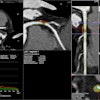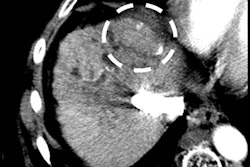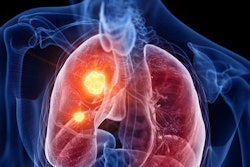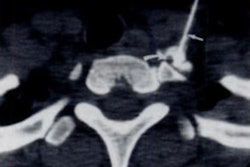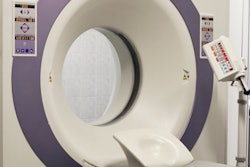CT radiomics features identified from abdominal fat and muscle tissue can help predict early recurrence of liver cancer after surgery, researchers have found.
"This study established pre- and postoperative nomograms incorporating radiomics based on abdominal adipose and muscle tissues to enable the risk stratification of patients with hepatocellular carcinoma for early recurrence," wrote a team led by Shuo Shi, PhD, of Qilu Hospital of Shandong University in China. The group's findings were published October 28 in Academic Radiology.
Liver cancer is the third leading cause of cancer-related deaths around the world, and its five-year survival rate is about 18%, the team noted. Although surgical resection is widely used to treat liver cancer, there is a high incidence of postoperative recurrence of the disease, with more than 70% of recurrences occurring within two years after surgery. Researchers have been motivated to identify predictive factors of this early recurrence, according to Shi and colleagues, who sought to investigate whether abdominal fat- and muscle-based CT radiomics features could help in this regard.
The team conducted a study that included 252 patients with liver cancer who underwent resection; of these, the investigators used data extracted from abdominal visceral adipose, subcutaneous adipose, and muscle from a cohort of 178 patients to develop and train two radiomics models and to establish a radiomics score and used data from 74 patients to validate the two models. Model 1 was based on preoperative variables (tumor size, alpha-fetoprotein, body mass index, and radiomics score) and model 2 was based on these variables plus the Edmondson–Steiner grade measure (which indicates the degree of liver cancer cell differentiation).
The researchers found that both models performed better compared with traditional staging techniques (i.e., the Okuda stage or the TNM stage), with respective areas under the curve of 0.81 and 0.72 (1 as reference). Most importantly, the two models accurately distinguished high-, intermediate-, and low-risk groups for early liver cancer recurrence (p < 0.01).
The study results are promising, according to the investigators, and offer a "potential and fresh perspective for the interpretation of the underlying mechanisms in which body composition affects the development and prognosis of hepatocellular carcinoma," they concluded.
The complete study can be found here.


